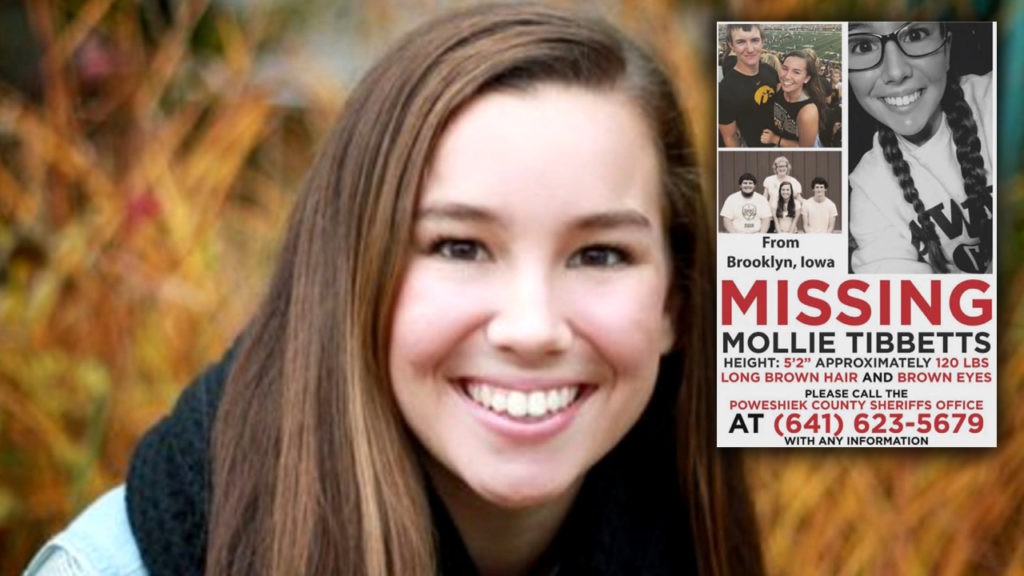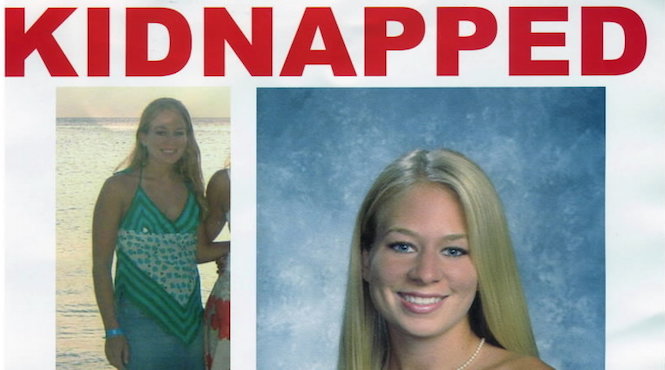Have you heard of Jaycee Dugard? What about Natalee Holloway or Laci Peterson? Or most recently, Mollie Tibbetts? Chances are you’ve heard of at least one of these names, all murder victims or missing persons.
But have you heard of Srey Nath or Evelyn Hernandez? LaToyia Figueroa or Stephany Flores? The likelihood of you having heard one of these names, all also murder victims or missing persons from around the same time as the previous names, is significantly lower. The reason? “Missing White Woman Syndrome”.
On the evening of July 18th, Mollie Tibbetts, a 20-year-old student from Iowa, went missing. As of Tuesday, a tweet about Tibbetts aimed at getting the information out about her disappearance has over 440,000 retweets.

The media hype, and subsequent social media frenzy, surrounding Tibbett’s disappearance is insane. But we’ve seen similar situations before with women like Dugard and Holloway and Peterson. And all of these women share one crucial quality: they are white.
Recently, a body was discovered in an Iowan town miles from where Tibbetts was last seen. However, the body was soon identified as that of 20-year-old Sadie Alvarado. The outrage surrounding this young woman’s death was almost nonexistent. Headlines around the discovery of Alvarado’s body read something like “body of woman found in Iowa NOT Mollie Tibbetts”, as if Alvarado’s death was merely yet another lead in the Tibbetts case gone cold. “If you read the comments [on news articles], people even went as far as to say, ‘Well it’s not Mollie, so …’ and I felt as if people weren’t valuing someone’s life,” Erin Fuller, who lives where Alvarado was from, told InsideEdition.com. “Sadie deserves to be recognized.” But as mentioned previously, unfortunately this trend has been happening for decades.
Around the time of Laci Peterson’s disappearance, 24-year-old Evelyn Hernandez, an almost nine months pregnant Salvadoran immigrant, and her American 6-year-old son went missing in San Francisco. The disappearance and subsequent murder of 27-year-old Laci Peterson, who was 8 months pregnant, dominated the news cycle. During the media frenzy surrounding Natalee Holloway’s disappearance in Aruba, LaToyia Figueroa, a 24-year-old, five months pregnant Afro Latina waitress, disappeared in Philadelphia after leaving a prenatal care session. The main cable news channels neglected to cover her story in favor of Holloway’s. Some observers protested that Figueroa’s story was extremely similar to Laci Peterson’s and yet received nowhere close to the same amount of press coverage, implying that race was a determining factor in choosing which stories to run. These examples of “Missing White Woman Syndrome” are just a few of the many that have occurred. But what exactly fuels this disparity in media coverage?
In journalist Sarah Stillman’s essay, “The Missing White Girl Syndrome”, she discusses the power of this bias. “They position certain sub-groups of women — often white, wealthy and conventionally attractive — as deserving of our collective resources, while making the marginalization and victimization of other groups of women, such as low-income women of color, seem natural,” Stillman wrote in her essay. Many studies have also found that news coverage of missing black women was more likely to focus on the victim’s baggage, such as abusive boyfriends or a troubled past, while coverage of white women tends to focus on their roles as mothers or daughters and their overall innocence. The media has recognized that young, white, affluent women and girls are capable of garnering more attention, more sympathy, and more overall interest than women and girls of color, or even men. There is both racial and gender bias at work in this disproportionate media coverage trend.
Sociologist Paul Mokrzycki recognizes that white female victimhood is a seductive image. He says that terms used by the press to characterize the missing persons are coded to characterize the victims based on race. “Here we see how ‘innocence’ assumed very specific racial, class, and gendered meanings,’ he wrote. “This fascination builds on historically rooted conceptions of beauty and innocence articulated through film, television, and print media.” This is why the disappearance and murders of young white women and girls are the ones that have led to specific efforts and programs put into place to help missing persons. This is why we have “Megan’s Law” and “Jessica’s Law” and “Laci and Conner’s Law” and “the AMBER Alert system”.
Mokrzycki also notes that the media’s sympathetic portrayal of missing white women remains resonant, even when other details about the victims come to light. In the case of Natalee Holloway, he said that her heavy partying in the final hours of her disappearance wasn’t a factor in media coverage. “Perhaps no one knows what happened to Holloway, but the fact that she might have spent her final hours in a drunken, sex-crazed stupor rubs many folks the wrong way,” he wrote. “Yet she still occupies a place of privilege in the American media canon.”

The drastic disparities in media coverage between white women and girls and, well, everyone else, is impossible to dispute. Yet it should also be noted that white female victims are still victims. We should not be turning a blind eye to anyone in danger who needs help. We should absolutely continue to retweet the details surrounding Mollie Tibbett’s disappearance. But we should also cover Sadie Alvarado’s story. Every victim is deserving of our resources and our efforts and our prayers. Every victim deserves to have people fighting for them. But while victims like Laci and Natalee will undoubtedly continue to garner attention and sympathy through media coverage, we must work to give the same to Evelyn and LaToiya. Because in the end, every victim is terrified and alone and desperate for help, no matter the color of their skin. In the end, every victim is just that—a victim.
By: Cianna Allen

